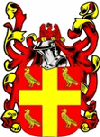Feinder
Matrix Legion of Merit

Posts: 6589
Joined: 9/4/2002
From: Land o' Lakes, FL
Status: offline

|
And I thought this was interesting. It's comments on some of the special considerations of flying boats.
quote:
Kermit Comment
This aircraft can only take-off and land on the water. The wheels on the sides are called beaching gear and are used only to get it to and from the water. The airplane is towed by tractor to the top of the seaplane ramp and placed facing the water. The wheels are chocked and the tractor moves to the rear of the aircraft where a rope is connected from the tractor to the release hook below the Sunderland’s tail. The tractor backs up to tighten the rope and the aircraft’s engines are started. Once warmed up, the chocks are removed and the pilot begins a slow taxi down the ramp. The tractor in tow helps control the speed. As soon as the Sunderland’s wheels touch the water, the tractor slackens the rope. The pilot pulls a handle in the cockpit, and releases the rope as the aircraft taxis into the water. Once moored, the beaching gear with its additional floatation attached is removed and towed back to shore by boat.
Steering on the water is done with differential throttling. There is no water rudder on the Sunderland and it has no brakes or reversible propellers. Operation on the water can get very interesting and it takes a lot of crew coordination. When starting the aircraft for flight, one outboard engine is started first, generally the one closest to shore. Once one engine is running and the mooring buoy released, the aircraft begins to move in a circle until the opposite outboard engine starts. The two inboard engines are started. After they are warmed up, the engines are run up two at a time. When all the safety checks are completed, the aircraft is ready for take-off.
After landing, and prior to mooring, the engines are cooled down and the inboard engines are shut down first. The pilot can steer the aircraft on the water by applying small amounts of throttle to the outboard engines. Remember, there are no water rudders or reversible propellers. In less than heavy wind conditions, this differential throttling allows the 'boat' to maintain far too much speed to moor and the aircraft easily will overrun the buoy. Upon command from the pilot, the bowman releases the drogues out each side. They are 3-foot canvas water parachutes that are attached each side of the nose and act as water brakes to slow it down further. When in very calm wind conditions, this is still not enough to slow the aircraft down. The pilot resorts to steering the aircraft by sailing the aircraft by using the flight controls to allow the wind to slowly turn the Boat. In the last few moments the pilot can further steer and slow down by temporarily shutting the engines on and off with the magneto switches.
To perform maintenance on the water, the leading edges of the wings just outboard of each engine, hinge down to become work platforms. With a portable stowed crane, the Sunderland has the ability to change an engine or propeller on the water. Working on the water can be interesting, where dropping a tool takes on a totally new meaning.

 Attachment (1) Attachment (1)
< Message edited by Feinder -- 4/2/2007 3:39:56 PM >
_____________________________
"It is obvious that you have greatly over-estimated my regard for your opinion." - Me  |
 Printable Version
Printable Version

































 )
) 



 Or are you just messing with my mind (not a difficult task really)
Or are you just messing with my mind (not a difficult task really) 

 New Messages
New Messages No New Messages
No New Messages Hot Topic w/ New Messages
Hot Topic w/ New Messages Hot Topic w/o New Messages
Hot Topic w/o New Messages Locked w/ New Messages
Locked w/ New Messages Locked w/o New Messages
Locked w/o New Messages Post New Thread
Post New Thread